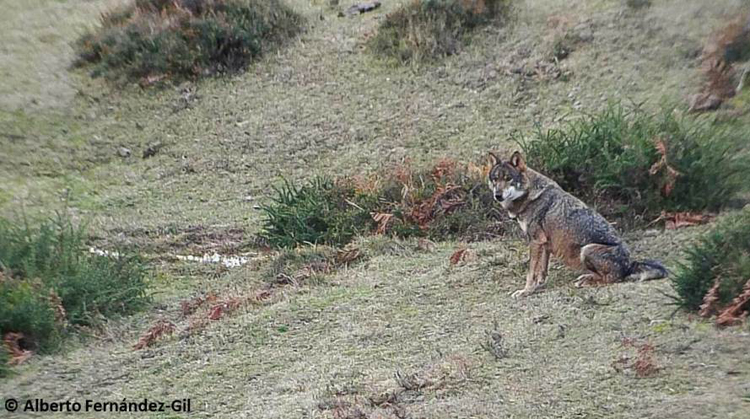Allee effects reduce the viability of small populations in many different ways, which act synergistically to lead populations towards extinction vortexes. The Sierra Morena wolf population, isolated in the south of the Iberian Peninsula and composed of just one or few packs for decades, represents a good example of how diverse threats act additively in very small populations. The genome of one of the last wolves identified (and road?killed) in Sierra Morena and that of another wolf in the Iberian Wolf Captive Breeding Program were sequenced, and compared with other wolf and dog genomes from around the world (including two previously published genome sequences from northern Iberian wolves). The results showed relatively low overall genetic diversity in Iberian wolves, but diverse population histories including past introgression of dog genes. The Sierra Morena wolf had an extraordinarily high level of inbreeding and long runs of homozygosity, resulting from the long isolation. In addition, about one third of the genome was of dog origin. Despite the introgression of dog genes, heterozygosity remained low because of continued inbreeding after several hybridization events. The results thus illustrate the case of a small and isolated wolf population where the low population density may have favored hybridization and introgression of dog alleles, but continued inbreeding may have resulted in large chromosomal fragments of wolf origin completely disappearing from the population, and being replaced by chromosomal fragments of dog origin. The latest population surveys suggest that this population may have gone extinct. informacion[at]ebd.csic.es: Gómez?Sánchez et al (2018) On the path to extinction: inbreeding and admixture in a declining gray wolf population. Mol Ecol. DOI: 10.1111/mec.14824
https://onlinelibrary.wiley.com/doi/abs/10.1111/mec.14824








 Las altas temperaturas están provocando que las lagunas y las marismas de Doñana pierdan agua rápidamente
Las altas temperaturas están provocando que las lagunas y las marismas de Doñana pierdan agua rápidamente



